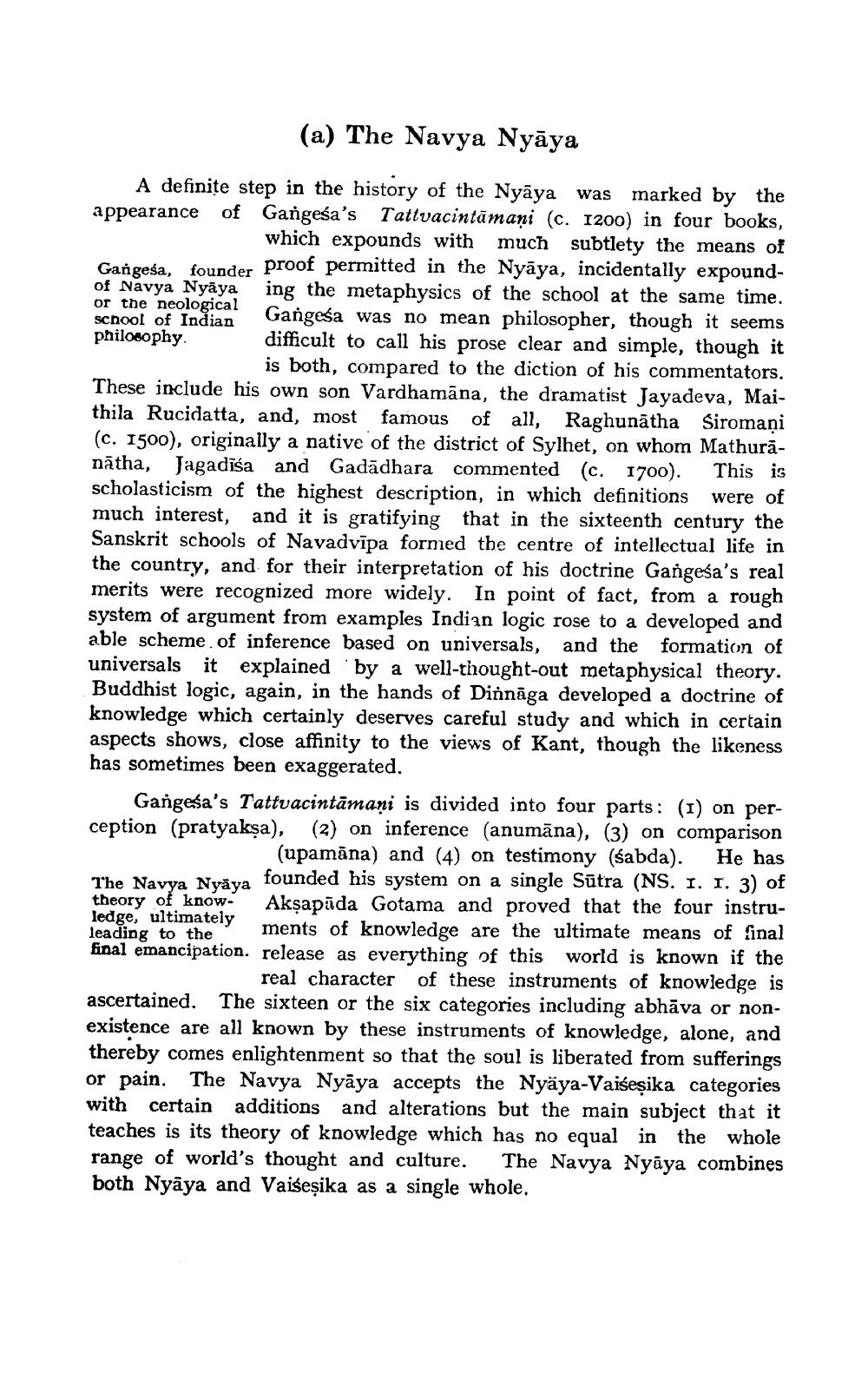________________
(a) The Navya Nyāya
A definite step in the history of the Nyāya was marked by the appearance of Gangeśa's Tattvacintämani (c. 1200) in four books,
which expounds with much subtlety the means of
proof permitted in the Nyāya, incidentally expoundof Navya Nyāya ing the metaphysics of the school at the same time. or the neological school of Indian
Gangesa was no mean philosopher, though it seems philosophy
difficult to call his prose clear and simple, though it
is both, compared to the diction of his commentators. These include his own son Vardhamāna, the dramatist Jayadeva, Maithila Rucidatta, and, most famous of all, Raghunatha Siromaņi (c. 1500), originally a native of the district of Sylhet, on whom Mathurānātha, Jagadisa and Gadādhara commented (c. 1700). This is scholasticism of the highest description, in which definitions were of much interest, and it is gratifying that in the sixteenth century the Sanskrit schools of Navadvīpa formed the centre of intellectual life in the country, and for their interpretation of his doctrine Gangesa's real merits were recognized more widely. In point of fact, from a rough system of argument from examples Indian logic rose to a developed and able scheme of inference based on universals, and the formation of universals it explained by a well-thought-out metaphysical theory. Buddhist logic, again, in the hands of Dinnāga developed a doctrine of knowledge which certainly deserves careful study and which in certain aspects shows, close affinity to the views of Kant, though the likeness has sometimes been exaggerated.
Gangesa's Tattvacintāmaņi is divided into four parts: (1) on perception (pratyakşa), (2) on inference (anumāna), (3) on comparison
(upamāna) and (4) on testimony (śabda). He has
a founded his system on a single Sūtra (NS. I. I. 3) of theory of know- Akşapāda Gotama and proved that the four instruledge, ultimately leading to the ments of knowledge are the ultimate means of final final emancipation. release as everything of this world is known if the
real character of these instruments of knowledge is ascertained. The sixteen or the six categories including abhāva or nonexistence are all known by these instruments of knowledge, alone, and thereby comes enlightenment so that the soul is liberated from sufferings or pain. The Navya Nyāya accepts the Nyäya-Vaiseșika categories with certain additions and alterations but the main subject that it teaches is its theory of knowledge which has no equal in the whole range of world's thought and culture. The Navya Nyaya combines both Nyāya and Vaišeşika as a single whole.
The Navya Nváva O
-OLLA
6"
ucido
.
.
.
J)




